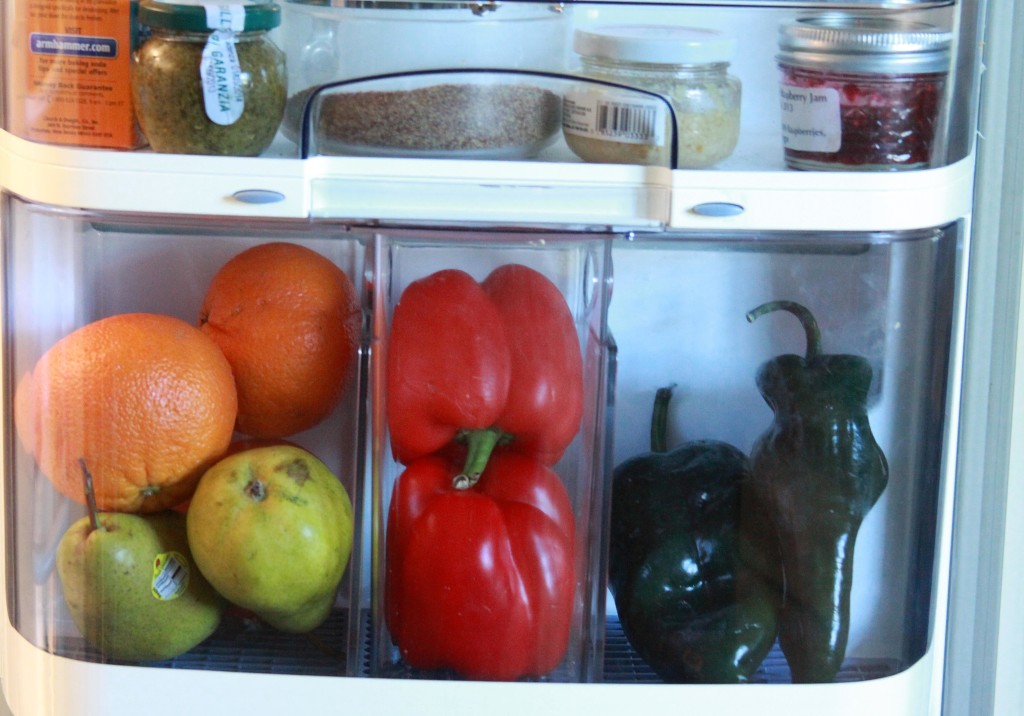Once upon a time, not all that long ago, I used to go into Whole Foods strictly to browse or pick up a specialty item for a recipe I was making. I would look at all the people doing their weekly grocery shopping, carts piled high, and wondering how on earth they could afford to shop exclusively at Whole Foods. I wondered what types of jobs they had that afforded them the luxury of shopping at the mecca of natural and organic items, sure that people on a budget, like me, could never swing such a thing.
Until one week, I decided to treat myself and give shopping at Whole Foods a try, just for a week and nothing more. I didn’t go crazy and still paid attention to value, but I was totally shocked when my purchases only ended up being a little bit more than my weekly trip to Target. If, without even trying, I could only spend about $20 dollars more, I figured that with a little bit of planning, I could shop at Whole Foods every week and still stick within our grocery and food budget for the month.
For the past month and a half, Joe and I have been (almost) exclusively shopping at Whole Foods for our groceries each week, and sticking to a budget all the while. I’ve always thought that eating as much organic and non GMO produce is important, but recently I felt the pull to put my money where my mouth was. Don’t get me wrong, we aren’t sticklers about it by any means, but when possible, I like the idea of making small changes for better health and long term wellness, and I think trying to eat more organic is one of those steps.
This week I documented the grocery shopping process to show you what works for us, and how we stay on budget. Typically we spend $100/week on groceries. We typically eat out once during the week (usually Friday night or Saturday night) and we pack all of our lunches and eat breakfast at home every morning. I also try to limit my trips to Starbucks and use gift cards most of the time. In light of that, I think $100/week is pretty reasonable. I should also note that Joe’s parents have always supplied us with all the free beef we could ever want or need, so that makes it easy for us to stay on budget as well as entertain.
So how have we managed to stay on budget? Here’s a look:
1. Menu Plan: Similar to my friend Clara, I like to take inventory of what I already have in the pantry (usually we have plenty of pasta, grains, broth, rice, tortillas, etc.) before I plan out my meals for the week so I can utilize what we already have. After I look at what is in the pantry, I start browsing magazines and cookbooks for recipes to try. I don’t cook from a recipe every day of the week, but I’ve been aiming lately to cook two recipes that are new to me, just to make sure I don’t get into a rut. This week, I selected a recipe for black bean and roasted pepper soup from Bon Appetit and tea-poached salmon with broccoli from the Sprouted Kitchen Cookbook, one of the most used books in my house. Here’s this week’s menu:
Saturday: Dinner with Joe’s family
Sunday: Spaghetti with Meatballs and Roasted Kale
Monday: Homemade Pizza and Romaine Salad with Chopped Peppers
Tuesday: Black Bean Soup (from Bon Appetit)
Wednesday: Channa Masala over Rice
Thursday: Tea Poached Salmon with Broccoli
Friday: Dinner at Chipotle
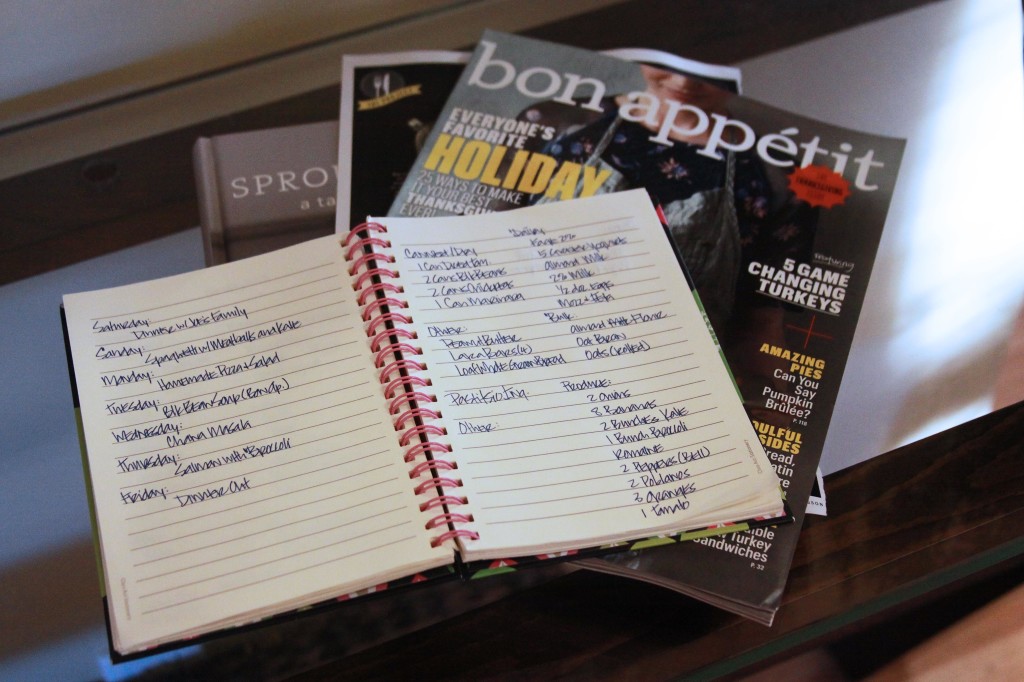
2. Make a List (and stick to it!): I am the first to tell you that Whole Foods sucks me in with all their fun specialty items. For this reason, I make a list and stick to it. Before making my list, I look at their website and see what is on special that week. In this case, salmon was on sale for $8.99/lb (!!) and the coffee pictured below was buy one get one free, so I made a point to find a recipe for salmon this week instead of something with chicken and stocked up on coffee. I know that if I make a good list, I don’t need to add extra items to my cart along the way since I already have everything I need accounted for.
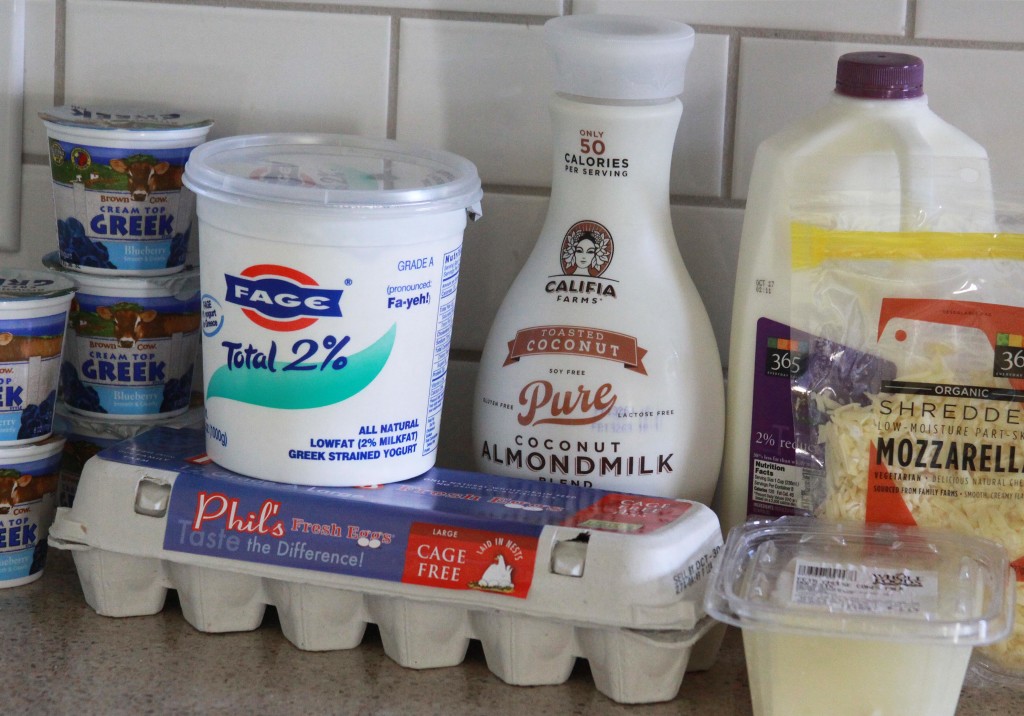
3. Don’t Get Too Attached: When I go shopping, I’m not attached to any one brand. Although I love certain brands of Greek yogurt, and Joe has his favorites, too, I am willing to switch to a different brand in favor of saving money. The Brown Cow brand of Greek yogurt isn’t the type Joe usually eats, but it was on sale for $1/each this week, so I made the switch. It’s also pretty fun to try new brands I might not otherwise be inclined to try.
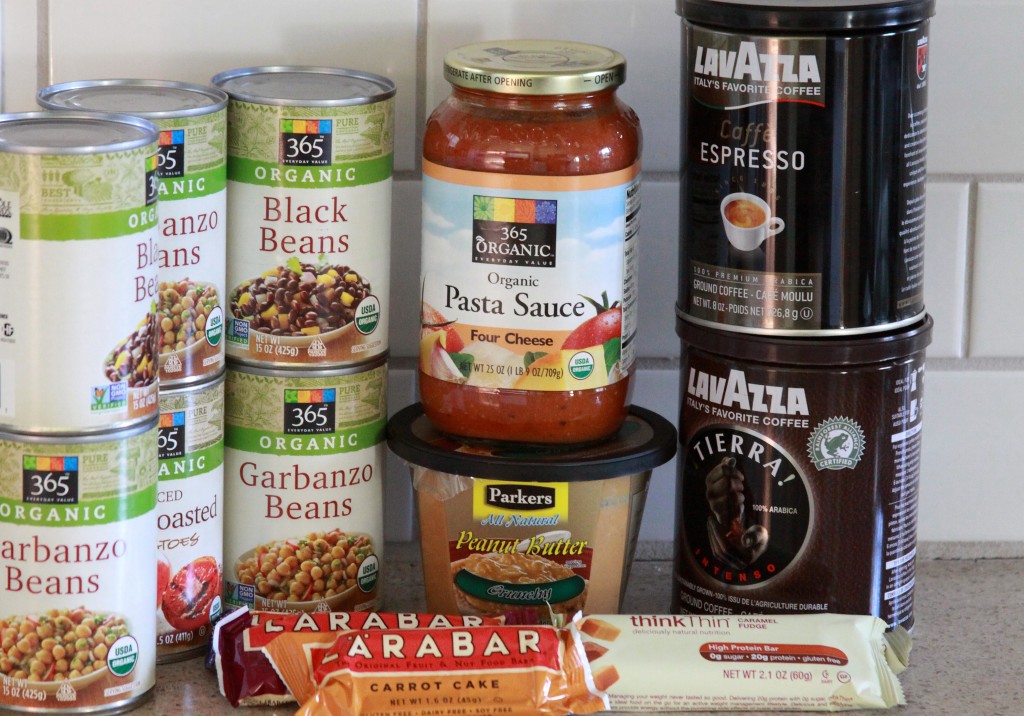
3. Make the Whole Foods 365 Brand Your Friend: It’s not news that generic brands are a good value, but this holds true for Whole Foods as well. Their 365 brand is fantastic and almost always cheaper than the brand name items in the store. Almost everything on my grocery list has a 365 equivalent, including canned tomatoes, beans, condiments, pastas and sauces. Plus, the items are organic!
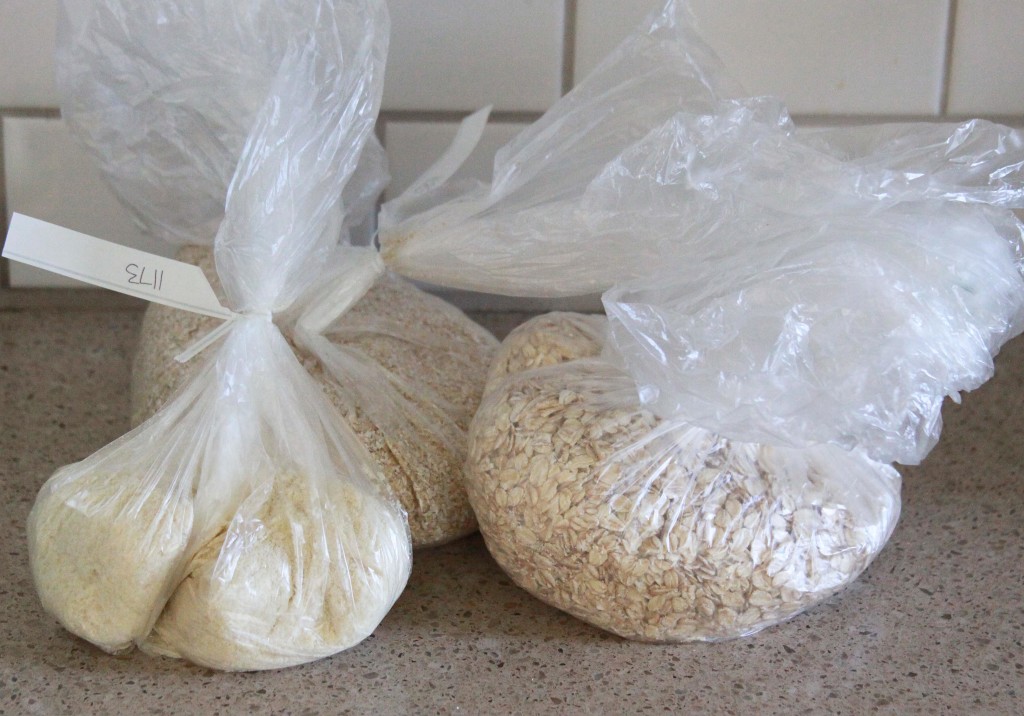
4. Shop the Bulk Bins: We go through a lot of oatmeal and oat bran throughout the week. Joe eats oatmeal for breakfast every morning and I have a bowl of oat bran, so buying these items in the bulk section at Whole Foods saves us a lot of money. It’s actually cheaper than traditional grocery store brands. I just transfer them to plastic storage containers when I get home for ease and freshness. Additionally, I like to buy items like nuts, seeds and specialty flours (like this almond flour) in small quantities.
5. Be Willing to Pay a Little More: This sounds a little contrary to everything I’ve been talking about, but when you are shopping at Whole Foods, you have to accept that produce which is organic and oftentimes non GMO is going to be a little bit pricier. This is where planning out meals comes in handy. I can spend a little extra on organic broccoli knowing that it’s not going to get tossed at the end of the week because it went bad and we didn’t have time to eat it. Also, be aware of the items it doesn’t make sense to buy organic. Items like bananas and oranges, where the peel is removed and discarded, don’t make a lot of sense to buy organic. In that case, buy conventional and save some money.
What’s your grocery shopping strategy? Anything I missed in this list that you think readers need to know?
Madison



